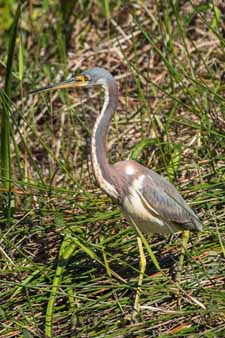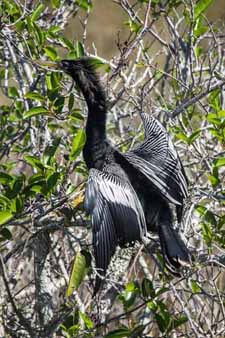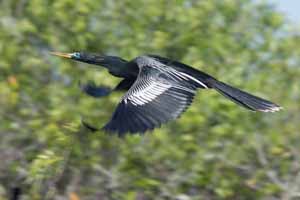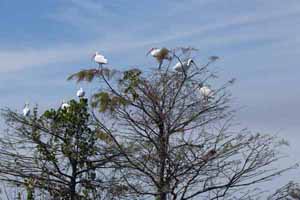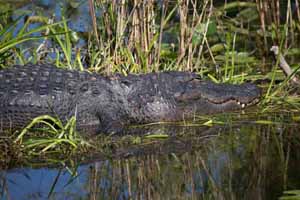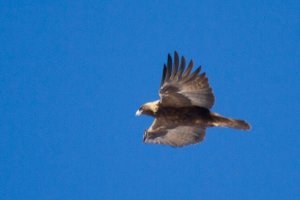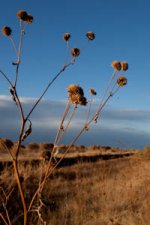Online Magazine
Recent Posts
- Safeguard your Cellphone Photos
- Black & White to Color – Instantly
- Wearing Many Hats
- Video Roundup
- Rescuing Your Blurry Pictures
- Showing Their Age
- What is Your Angle?
- Panorama Photos
- Humorous Photos
- Close Ups
- Fisheye Pictures
- Photo Antiquities
- Printing Big
- Appreciating Scale
- Celebrity Sightings
Tags
More Places to Go
- Free "How-To" Books “How To” books for popular cameras 0
- Vist Us on Facebook keep in touch with us on Facebook 2
Archives
- July 2023 (1)
- March 2023 (2)
- February 2023 (1)
- December 2022 (1)
- October 2022 (1)
- September 2022 (8)
- August 2022 (9)
- July 2022 (1)
- June 2022 (1)
- June 2021 (1)
- May 2021 (1)
- March 2021 (5)
- February 2021 (4)
- January 2021 (2)
- April 2019 (1)
- March 2019 (1)
- February 2019 (1)
- October 2018 (2)
- April 2018 (1)
- March 2018 (4)
- February 2018 (1)
- November 2017 (1)
- August 2017 (1)
- June 2017 (1)
- April 2017 (1)
- March 2017 (5)
- February 2017 (2)
- January 2017 (1)
- October 2016 (1)
- September 2016 (1)
- August 2016 (1)
- July 2016 (1)
- May 2016 (1)
- April 2016 (1)
- March 2016 (2)
- February 2016 (1)
- January 2016 (2)
- December 2015 (1)
- November 2015 (1)
- October 2015 (3)
- April 2015 (1)
- March 2015 (5)
- February 2015 (1)
- January 2015 (4)
- December 2014 (2)
- November 2014 (5)
- October 2014 (2)
- September 2014 (1)
- August 2014 (2)
- July 2014 (1)
- May 2014 (1)
- April 2014 (5)
- March 2014 (5)
- December 2013 (2)
- November 2013 (18)
- October 2013 (1)
- September 2013 (1)
- August 2013 (1)
- July 2013 (1)
- June 2013 (3)
- May 2013 (1)
- April 2013 (2)
- March 2013 (1)
- February 2013 (1)
- January 2013 (1)
- December 2012 (1)
- November 2012 (2)
- October 2012 (2)
- September 2012 (5)
- August 2012 (2)
- July 2012 (1)
- June 2012 (1)
- May 2012 (1)
- April 2012 (4)
- March 2012 (1)
- February 2012 (1)
- January 2012 (3)
- December 2011 (1)
- November 2011 (3)
- October 2011 (1)
- September 2011 (2)
- August 2011 (2)
- June 2011 (3)
- May 2011 (4)
- April 2011 (8)
- March 2011 (8)
- February 2011 (10)
- January 2011 (6)
- December 2010 (11)
- November 2010 (14)
- October 2010 (6)
- September 2010 (12)
- August 2010 (2)
- July 2010 (4)
- June 2010 (3)
- May 2010 (1)
- April 2010 (1)
- March 2010 (2)
- February 2010 (1)
- January 2010 (1)
- December 2009 (1)
- November 2009 (2)
- October 2009 (2)
- September 2009 (1)
- August 2009 (3)
- July 2009 (2)
- June 2009 (1)
- May 2009 (2)
- April 2009 (1)
- March 2009 (2)
- February 2009 (1)
- January 2009 (3)
Wild Misdirection
16th March 2013
Making Wildlife Appear Even More Wild
I consider myself pretty honest and straight-forward – both in business life and in personal life.
So you may wonder why I am writing an article about deception. Maybe this is too harsh a word – let’s just call it misdirection.
Let me explain. Often photographs tell only part of the story. If I am clever, I can photograph a tiger in a zoo by carefully orchestrating the background, lighting, angle and surroundings to make it feel that it was taken in the heart of the Bengal jungle. I might lead you to believe that I shoot for National Geographic.
Following are a few examples of how you might creatively use point of view (POV) to enhance your wildlife photography skills and put you in line for work at the nature magazines.
Those of you who have already used photographic misdirection, please raise your hands!
Of course, creative point of view can be used for any kind of photography, not just wildlife. So get out there and change your point of view around.
Written by Arnie Lee
Sometimes luck trumps skill
04th March 2011
Shooting Birds
Certainly one of the reasons that I enjoy the profession so much is that there are so many types of photography to choose from: architectural, wedding, journalism, nature, portrait, fine art, and the list goes on.
And like many other photographers, I often jump from one type of photography to another when the job calls for it or when I feel the need to “escape” to a totally different subject.
Each type of photography utilizes different skills.
For example, portrait photography is most successful when the subject can comfortably relate to the photographer who then combines creative posing and technical lighting to record a likeness of that subject.
A food photographer may use many tricks to enhance the appearance of a gourmet dish – with sprays, glue or gels, perhaps. These are skills that make the food look good; you probably wouldn’t want to eat the food after the photo session.
Having participated in many of the types of photography over the past 40+ years, I have learned that some types of photography require a higher level of skill than others.
From my experience, “photography degree of difficulty” varies from snapshots and event photography at the low end to wedding photography at the high end. And somewhere near the high end is wildlife photography. For the last few years, I’ve spent a lot of time trying to improve my wildlife skill level.
I quickly snapped a half dozen photos before the eagle was out of range. Unfortunately, I wasn’t as lucky here. The photo is blurred owing to the distance and my rushed attempt.
So this time out, luck played a role in my capturing the Stellar’s jay. But I wasn’t as lucky with the golden eagle.
Still, I know that unless I’m out there hiking the trails and observing my surroundings that luck won’t have a chance to take hold. Each time I’m out enjoying nature I’m hoping that for that lucky catch.
Take enough photos and luck will come your way too. It’s a promise.
Written by Arnie Lee
X-Country Photo Trip – Part 1
15th November 2010
Last Friday Mom flew from Grand Rapids to Phoenix as many other snowbirds do for the winter. I volunteered to deliver her car to Phoenix so that she’d have wheels for her six month stay. To make my drive more productive, I turned the 2000 mile journey from Grand Rapids into a mini photo trip.
Just as many retirees make the trek to warmer climates in the late fall, so do many northern birds. One of their gathering spots is the Bosque del Apache National Wildlife Refuge. I leave Grand Rapids on Tuesday at noon (ahead of Mom) and set the destination in my GPS for Socorro, New Mexico – about 90 miles south of Albuquerque, New Mexico.
Eight hour later as I’m passing through St Louis, I’m attracted to the night time lights of the Gateway Arch. I exit the interstate and head towards the Mississippi River where I find a place to park my car adjacent to the river front. Here’s what I see:
 Four Seasons casino and resort |
 the Gateway Arch |
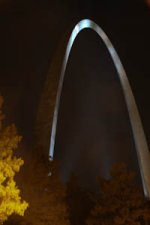 |
After 30 minutes I’m in the car and back on the interstate. My next stop is a rest area in Oklahoma near the Texas state line at 3am. I grab a few hours sleep in the car until I awake from the cold. Drive on. Approaching Amarillo, I spot an unfamiliar aircraft circling the airport. Then I recognize it as a V-22 Osprey doing touch and go maneuvers. I pull off at the next exit and grab my camera with a long lens.
 V-22 Osprey doing touch and go’s |
 what a beautiful looking aircraft |
On the road again, it’s a pleasant drive on a warm, sunny day across the high plains and farm lands of New Mexico. For the next few hours I pass by towns with great names: Tucamcari, Cuervo, Santa Rosa, Moriarity, Albuquerque.
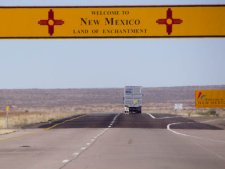 |
 |
The final leg is south on Interstate 25 to Socorro about 1500 miles and 28 hours from Grand Rapids. I check into the Howard Johnson motel, drop off my suitcase and hop back into the car for the short 30 miles trip to Bosque del Apache. My goal is to be able to see the sunset at Bosque.
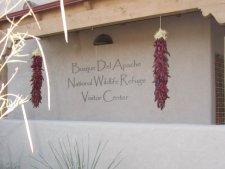 Nat’l Wildlife Refuge Visitor’s Center |
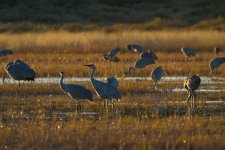 sandhill cranes feeding in the marsh |
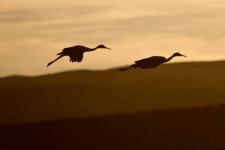 coming in for a night landing |
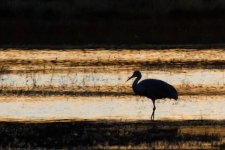 alone again |
The next morning I’m up at 5am to arrive at Bosque again to experience the solitude of dawn.
 dawn arriving at the north pond |
 early morning flight |
From here on, I’ll skip the text and show you some of the snapshots
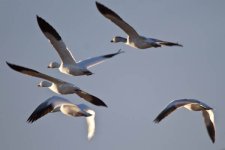 small flock of snow geese |
 northern pintail enjoying the pond |
 juvenile northern harrier scanning for food |
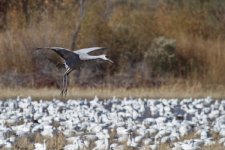 sandhill crane touching down |
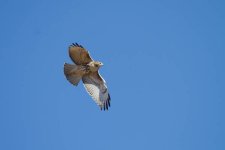 high flying adult northern harrier |
 gorgeous warm and sunny day at the NWR |
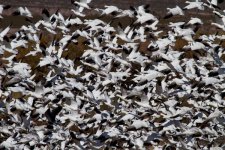 spectacular flyout by thousands of snow geese |
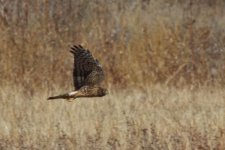 this harrier scared an awful lot of snow geese |
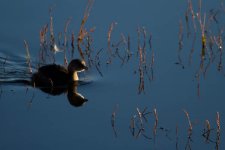 duckling enjoying a swim |
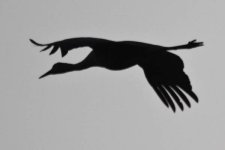 sandhill crane moving in late afternoon |
While my stay at Bosque ended on Thursday evening, I awoke on Friday to complete the drive to Phoenix. I had a much shorter 350 mile drive ahead of me and again I turned it into another mini-photo trip. More about the Socorro to Phoenix leg in my next episode.
« Older Posts — Newer Posts »